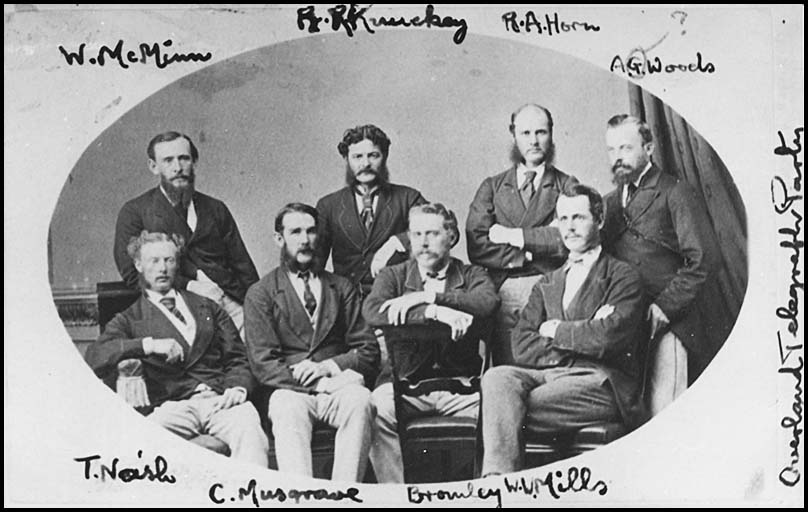Some operational aspects of the OLT construction activity.
- Australia 1901-1988
- New South Wales
- Queensland
- South Australia
- Tasmania
- Victoria
- Western Australia
- International
- Special aspects
The main personnel.
There were of course many people involved in the construction of the Overland Telegraph Line. Many of those are long-since forgotten.
| In addition to Todd, the main planning and construction team consisted of some of those shown below. Most of these pioneers are referenced in the various pages - especially in the Line Construction section (see section 9). |
 |
Many men died from such causes as attacks by the indigenous people concerned about their land, from starvation and dehydration and from becoming disoriented in the outback. Many women also died. They would be generally living in one of the stations or camps. Probably the most common cause of death amongst the women was childbirth.
Some stories are recorded. Others are not as it was regarded as part of the job. Historians have never really been interested in the OLT despite its importance. For example, there is no known date as to when the line ceased to operate.
See the story about Charles Kraegen.
Financing
Four of the Colonies paid an annual levy to support the construction and maintenance of the first line and later of the duplicate cable between Port Darwin and Penang. The basis of the levy was the number of people in the Colony.
In 1881, the Government of South Australia objected to the way the levy was imposed on the grounds that aboriginals were not included by Western Australia but were by the other three participating Colonies. I addition, South Australia had more aboriginals that the other Colonies and this was deemed to be unfair. Hence the basis was adjusted and South Australia received a reasonable reduction. See 1882 Annual Report for Victoria p. 18.
Batteries
The batteries along the line were Meidnyer cells filled with solutions of copper sulphate and magnesium sulphate. The cells were made fro glass and were 25 cm tall and 15 cm in diameter. Each operated at 1.5 volts. The Overland Telegraph Line worked at 120 volts and so many cells were required. At Daly waters, for example, there were 350 cells and a section was renewed each week so that the replacement of all cells took four months.